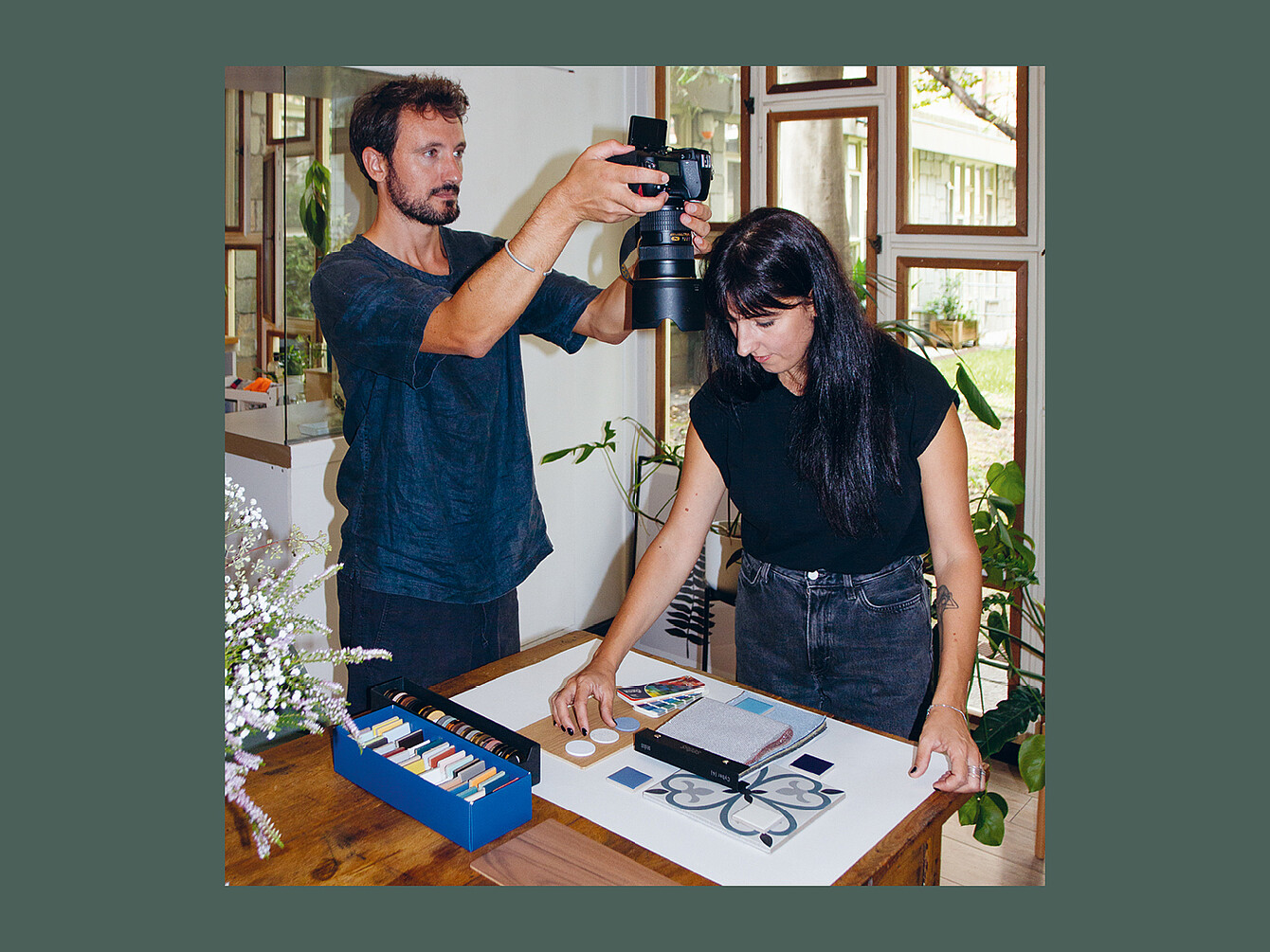In this interview, the interior designer and founder of “Unprogetto” shares her approach to crafting individualised design concepts, and offers her insights on the balance of working from home.
Living with the 'WOW' factor
Unconventional windows, a kitchen reminiscent of an aquarium, and a spectacular fountain in the outdoor area – your apartment is a paradise for design enthusiasts. What is your personal highlight?
When I visited this apartment for the first time, after years of searching for a home, I looked at my husband and said: “I want it.” I love the glass wall overlooking the garden; it makes me feel immersed in nature, despite being in the city centre.
How would you describe your interior design style?
I do not subscribe to any specific style. I try to guide my clients to discover their own personal style. I aim to design homes that reflect their view of the world, and in doing so, I try to stay in the background – like an invisible hand that gently guides without imposing itself.

The outdoor area of the apartment is reminiscent of a small park and offers the perfect setting for a coffee break. Davide likes to use the universal stool se:dot from Sedus for this. The furniture in Carlotta’s apartment is suitable for both living and working.
Harmony between work and life
You live and work in your home. How do you separate the two areas, or how do you reconcile them?
I must admit I have not been very good at physically separating the two areas in my home. However, my children naturally create that boundary; the house can only be my workspace when they are not there. The moment they walk through the door, life takes over, and work leaves the home.

Carlotta sees a variation in the design of home offices in terms of the type of work a person does: an architect will need a different space compared to a web designer or team manager.
The three essentials for a successful home office
As an interior designer, you also furnish other people’s homes. What special features need to be considered when designing a home office?
I would say there are three key elements to a home office:
Comfort: a comfortable working position makes a big difference. This depends on the combination of desk and chair, but also on the overall comfort of the room and its surroundings (plants, for example, can positively improve your mood).
Light: natural and artificial lighting need to complement each other to create a space that is easy on the eyes.
What you are facing: it is crucial to consider the placement of the home office. Imagine yourself working there: What do you see? What can inspire or distract you?
How do you personally perceive the change to hybrid working and working from a home office?
I think the pandemic has taught us to take better care of our personal lives, as well as our professional ones. Hybrid working is a step in that direction. Personally, more than the pandemic, it was the birth of my children that had the greatest impact on me. Today, I feel the need for time and space to dedicate to them, but also to myself and my personal life. When I was younger, I thought that work defined me, but now I feel that design is only a part of who I am. Working from a home office allows us to free up time and focus on what we love.

“My coffee is made using the family’s espresso coffee maker, the 9090 by Alessi designed by Richard Sapper. Davide makes it every morning, quite diluted, and we drink it almost like American coffee, never without sugar.” Carlotta Berta
Interior trends and inspiration from Turin
In your profession, colours, materials, and textiles play a major role. Do you notice any trends in home office design?
In home office design, as well as in interior design in general, I see two opposing yet distinct trends. On the one hand, there is a desire for lightness, playful interiors with fun shapes and bold contrasting colours (playfulness escapism). On the other hand, there is a search for calm, beauty, luxury, and the desire to curate and collect (quiet luxury). Alongside both, there is a growing sensitivity towards sustainability, which has become an essential element of design.
Turin is world-famous for the architectural diversity of its city centre. To what extent does the city influence you in your work?
Turin is the city I have chosen to call home; I love its colours, lights, and spaces. It is a city where many elements blend effortlessly, simple yet very complex at the same time. It is a city that does not shout but reveals itself gradually to those who take the time to notice. And it is a city that has been deliberately designed, where most streets intersect at right angles. In some way, I bring all three of these elements into my work.

Conclusion: rooms influence our attitude to life
Carlotta Berta shows how strongly rooms can influence our attitude to life – especially when living and working merge. Her apartment is not only a creative refuge, but also an expression of a new work and life attitude: flexible, individual and well thought out. If you are looking for inspiration for your own home office, you will find plenty of valuable ideas in Carlotta's approach – and perhaps also the encouragement to completely rethink your own style.
Curious? Listen to the work now next podcast episode with Carlotta Berta and check out her blog ‘Unprogetto’:
Insider tip: Carlotta’s favourite work café in Turin
Edit Torino is a dynamic, multi-purpose space designed to foster collaboration and creativity. Located in the heart of Turin, it combines workspaces, hospitality, cultural events, and a brewery, providing a social hub for creatives across various industries. With its blend of modern design and innovative concepts, Edit Torino is more than just a work café – it is a space for people.
Location: Edit Torino, Piazza Teresa Noce 15A, 10155 Turin, Italy
The interview with Carlotta Berta was first published in the Sedus LOOKBOOK N° 02. You can receive the full issue of the magazine, by email, here.
social media channels:


